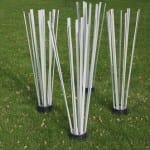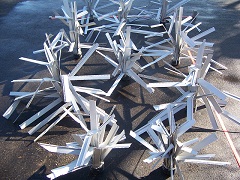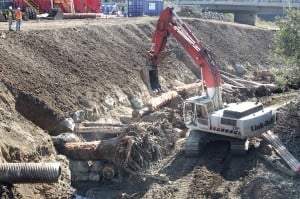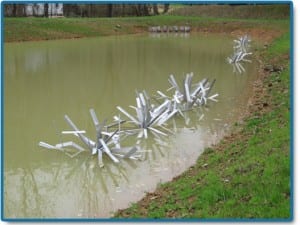Sinking Spools for Shoreline Succes
Division’s work aims to help shore anglers
CORTLAND, OH- Northeast Ohio has some excellent fishing available to anglers, but some of the better fishing lakes are sometimes the larger lakes. For anglers without a boat, this presents a problem since some of the best fishing spots are not accessible or are heavily pressured. So where is an angler supposed to go if they want to fill their stringers without launching a boat?

This past week, the Ohio Division of Wildlife placed
fish attractors in a popular shore fishing spot at
Mosquito Reservoir (Trumbull County). “From ice out to ice up, there’s always someone fishing along that stretch of shoreline. We hope our work will improve the fishing along there,” said Matt Wolfe, Fisheries Biologist, who oversees this project for the Ohio Division of Wildlife. Plastic spools weighed down with stone were placed near the rip-rap break wall outside of the State Park Boat launch on the south side of the lake. Spools were placed along the outside and inside edges of both the Northern and Southern sections of the break wall. In total, 50 spools were placed in anywhere from seven to 14-feet of water. More importantly though, “the spools were placed within easy casting distance for anglers who fish this area,” added Wolfe.
The goal of this project is to introduce these fish attractors into the waters of Northeastern Ohio to recruit the next generation of anglers and retain the anglers who already enjoy the sport of fishing. A downloadable Google Earth file containing all of the structure placements throughout Northeast Ohio is available by contacting the Wildlife District Three office at (330) 644-2293.Written by: ODNR Division of Wildlife.
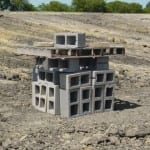
The US Army Corps of Engineers will host National Public Lands Day events at various lakes throughout the Pittsburgh District. In 2010, more than 500 volunteers came to 15 of 16 Pittsburgh District recreation projects and provided 2,179 hours of work valued at nearly $47,000. National Public Lands Day keeps the promise of the Civilian Conservation Corps, the “tree army” that worked from 1933-1942 to preserve and protect America’s natural heritage.
A local event at Mahoning Creek Lake will be held Sept. 24. This year the goal is to accomplish the building and placement of some fish habitat spawning boxes in the lake. If time permits, shore line clean-up will be done. Volunteers are asked to meet at 9:30 a.m. at the Milton Loop Campground pavilion, on Route 839, two miles north of Dayton.
See the dozens of unique artificial fish habitat models, fish attractors and fish cover used at fishiding.com, the industry leader and only science based, man made and artificial fish habitat, proven to provide all fish with cover they prefer to prosper.
The project will be to build wooden spawn boxes and then taking them by boat to place them in the lake. Event will take place rain or shine. Questions may be directed to Park Ranger Grover Pegg 412-719-9227.
